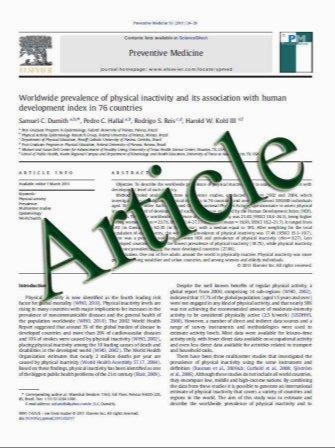Sexual Serosorting among Women with or at Risk of HIV Infection
- نوع فایل : کتاب
- زبان : انگلیسی
- مؤلف : Chenglong Liu Haihong Hu Lakshmi Goparaju Michael Plankey Peter Bacchetti Kathleen Weber Nereida Correa Marek Nowicki Tracey E. Wilso
- چاپ و سال / کشور: 2010
Description
Serosorting, the practice of selectively engaging in unprotected sex with partners of the same HIV serostatus, has been proposed as a strategy for reducing HIV transmission risk among men who have sex with men (MSM). However, there is a paucity of scientific evidence regarding whether women engage in serosorting. We analyzed longitudinal data on women’s sexual behavior with male partners collected in the Women’s Interagency HIV Study from 2001 to 2005. Serosorting was defined as an increasing trend of unprotected anal or vaginal sex (UAVI) within seroconcordant partnerships over time, more frequent UAVI within seroconcordant partnerships compared to non-concordant partnerships, or having UAVI only with seroconcordant partners. Repeated measures Poisson regression models were used to examine the associations between serostatus partnerships and UAVI among HIVinfected and HIV-uninfected women. The study sample consisted of 1,602 HIV-infected and 664 HIV-uninfected women. Over the follow-up period, the frequency of seroconcordant partnerships increased for HIV-uninfected women but the prevalence of UAVI within seroconcordant partnerships remained stable. UAVI was reported more frequently within HIV seroconcordant partnerships than among serodiscordant or unknown serostatus partnerships, regardless of the participant’s HIV status or types of partners. Among women with both HIV-infected and HIVuninfected partners, 41% (63 HIV-infected and 9 HIVuninfected) were having UAVI only with seroconcordant partners. Our analyses suggest that serosorting is occurring among both HIV-infected and HIV-uninfected women in this cohort.
AIDS Behav (2011) 15:9–15 DOI 10.1007/s10461-010-9710-3 Published online: 19 May 2010


